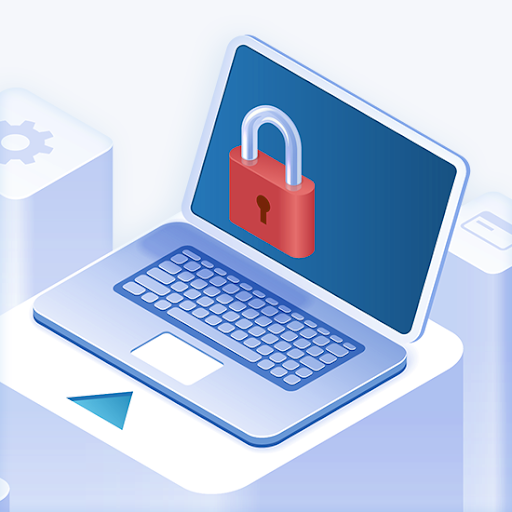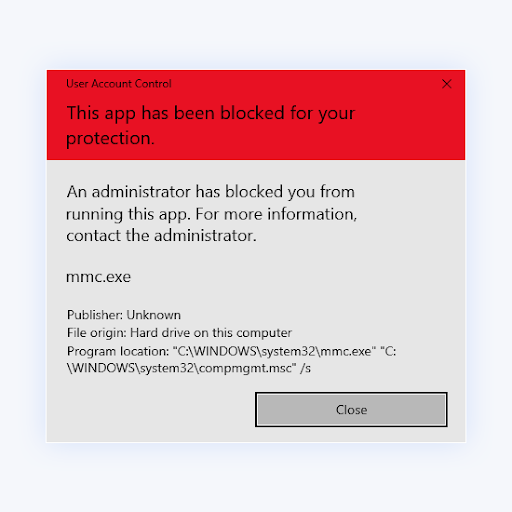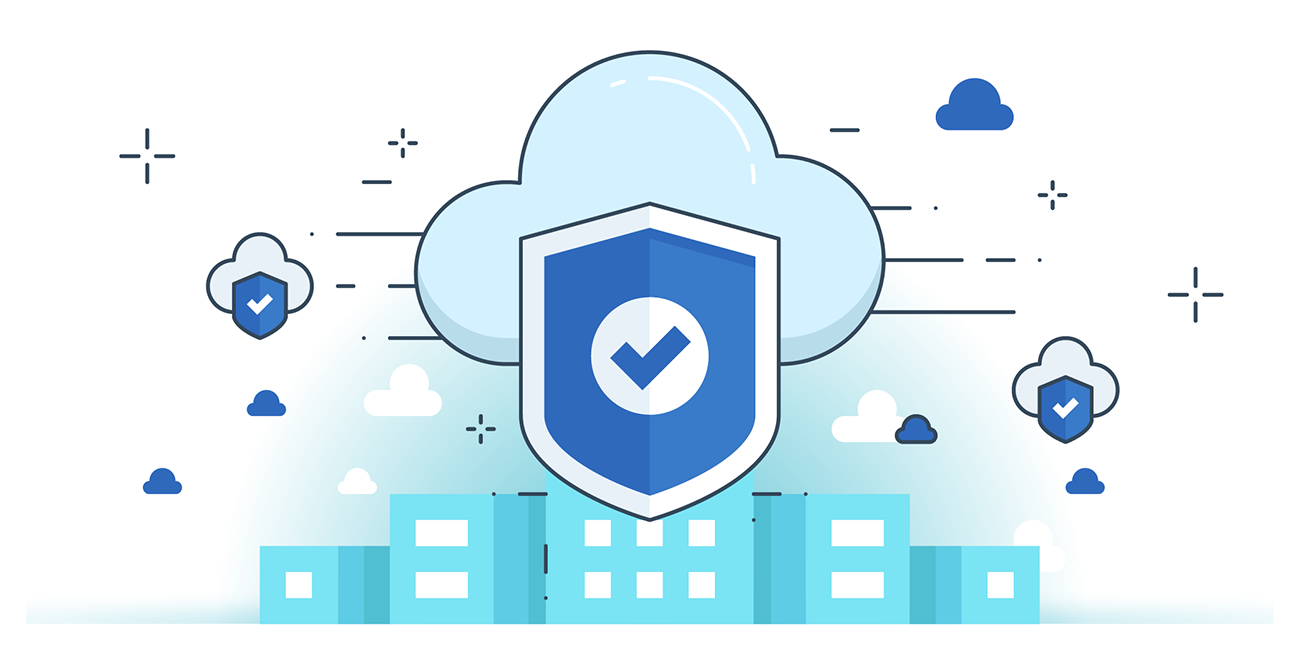How to Fix ERR_EMPTY_RESPONSE Error on Google Chrome
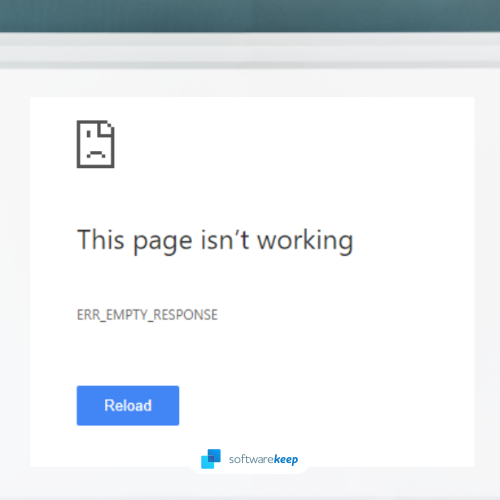
Why do I get ERR_EMPTY_RESPONSE and how do I fix it?
The err_empty_response (err empty response) message can occur when using the Chrome browser and you are trying to access a website. It simply means that data is not being sent/transmitted.
In this day and age, when everyone relies on the internet for one thing or another, this error can be devastating. Whether it's for school, work, or personal use, when something goes wrong and we can't access the sites we need, it can be a real headache.
If you're having trouble with this error message, don't worry - we've got some fixes for you! Keep reading to learn more.
What Is the ERR_EMPTY_RESPONSE Error?
The "ERR_EMPTY_RESPONSE" error appears when you're going through the internet and a website you're looking for isn't responding or providing data in response to your request. This indicates that there is a problem with your network connection.
This error is also indicated by the "No Data Received" message that appears while you're browsing the internet.
When a web page you want to visit in Google Chrome does not respond to your request or send data in response, the error occurs.
What Causes the ERR_EMPTY_RESPONSE Error in Chrome?
Why do i get the err_empty_response error in chrome?
There are different answers to this:
While there are different things that can cause the ERR_EMPTY_RESPONSE error, the most common one is an issue with your internet connection (or Internet Service Provider (ISP).
This can be anything from a problem with your modem or router to a configuration error on your computer.
In some cases, the ERR_EMPTY_RESPONSE error can also be caused by a website that's down or experiencing technical difficulties. The most common ones include:
- Your internet connection or network connection is too slow.
- The website you're trying to access is down or experiencing technical difficulties.
- There is a problem with your DNS server.
- You have outdated browsing data stored in your browser.
- Your PC firewall is blocking the website you're trying to access.
- There's a problem with your ISP.
Luckily, there are a few different things you can try to fix this error. Read on for our top tips!
How To Fix the ERR_EMPTY_RESPONSE Error in Chrome Browser
There are some things you can do to restore your connection and fix this frustrating error in your Chrome browser. The troubleshooting steps below will help you identify the problem and get back to browsing as usual.
Method 1. Check Your Internet Connection
One of the first things you should do when you encounter this error is to check your internet connection. This can be done by opening up the Command Prompt on your computer and typing "ping google.com".
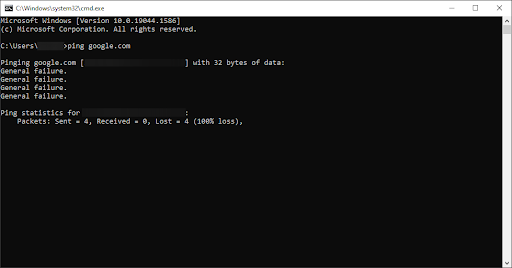
If you see a message that says "Request timed out," then there's a problem with your internet connection and you'll need to troubleshoot further.
If you're able to ping successfully, the issue may be with the website itself and not your connection.
Method 2. Try Using Incognito Mode
If you're still seeing the ERR_EMPTY_RESPONSE error, try opening an incognito browsing window in your Chrome browser. To do this, follow these steps:
- Open Google Chrome, then click on the More icon (displayed by three dots arranged vertically).
- Click on the New Incognito Window option from the context menu. A new window will appear letting you know that you’re browsing incognito.

- Enter the website you want to visit the address bar and see if you can access it without the error message appearing.
This will open a new browser window where you can browse the internet without cookies or cached data. This can help if the problem is caused by a corrupt cookie or cache file. You can also use this to test if your extensions are causing a problem, as in Incognito mode, extensions are disabled by default.
Recommended: How to Use Google Chrome Extensions in Incognito Mode
Method 3. Change Your DNS Server
If you're still having trouble, try changing your DNS server. This is usually provided by your ISP, but you can also use a public DNS server such as Google Public DNS or Cloudflare DNS. To change your DNS server in Windows, follow these instructions:
- Press Ctrl + X on your keyboard, and then click on Network Connections from the context menu.
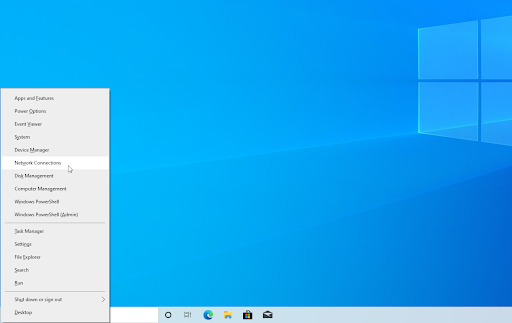
- Select your current connection type (for example “Wi-Fi” or “Ethernet”) in the left pane, and then click on Change adapter options on the right pane.
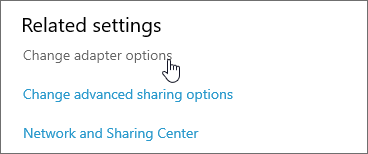
- Right-click on the connection you’re currently using and select Properties.

- Scroll down until you see the Internet Protocol Version 4 (TCP/IPv4) option. If there’s no checkmark next to it, click on the box once to enable it. Afterward, click on the Properties button to open a popup window.
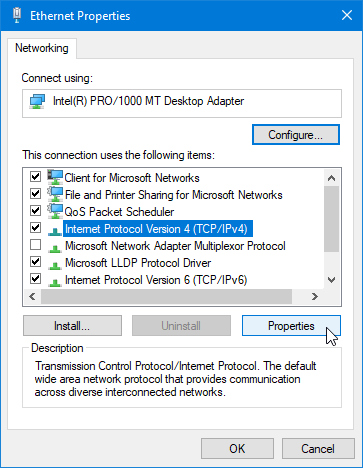
- Select Use the following DNS Server addresses. Now, you have some choices for what DNS server you want to use:
- Type 1.1.1.1 into the first row, then 1.0.0.1 into the second row. This will change your DNS to the popular 1.1.1.1 server, which you can read more about by clicking here.
- Alternatively, use Google’s DNS server by typing in 8.8.8.8 as the Preferred DNS server and 8.8.4.4 as the Alternate DNS server.
- You can also use OpenDNS if you type in 208.67.222.123 and 208.67.220.123 to their respective fields.
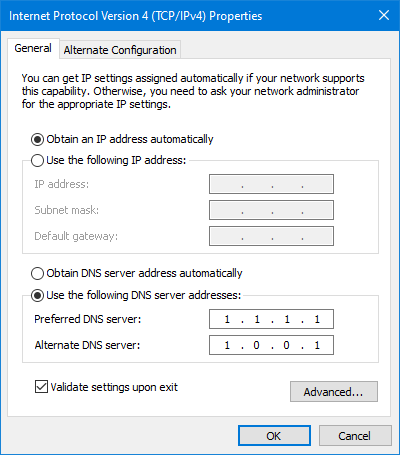
- Select the Validate settings upon exit option if you don’t want to restart your computer — otherwise, and then click OK and reboot. See if the changes have helped you restore your connection to the website.
Method 4. Delete Your Temporary Files
Another thing you can try is deleting your temporary files. These are often the cause of errors and problems with your computer.
To do this, follow the steps below.
- Open the Start menu or search bar in your taskbar by clicking on the magnifying glass icon. You can also bring it up with the Windows + S keyboard shortcut.
- Type in Disk Cleanup and click on the first search result.

- Select the Windows 10 system drive, and then click the OK button. Usually, the system is installed on disk C:.
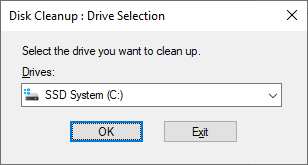
- In the new window, you’ll see all space taken by temporary files. Select both Temporary Internet Files and Temporary Files. You may also delete other junk files, such as Thumbnails or DirectX Shader Cache.
- When you're done selecting what you want to remove, click OK.
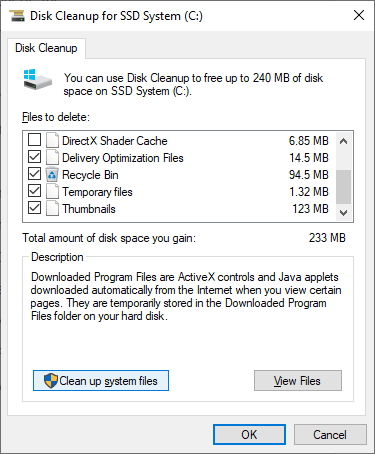
- Click on the Delete Files button in the dialog box that pops up. The removal process will start. When it’s finished, try accessing the website you’re having issues with.
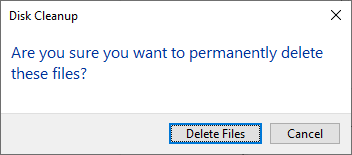
Method 5. Clear Your Browsing Data and Cookies
If you're still seeing the ERR_EMPTY_RESPONSE error, try clearing your browsing data and cookies. This can help if the problem is caused by a corrupt cookie or cache file. Follow the steps below to clear your browsing data in Chrome.
- Click on the More icon (the three dots placed vertically next to your Chrome user icon), and then hover over More tools. Select Clear browsing data from the drop-down menu.

- Make sure the time range is set to All time.
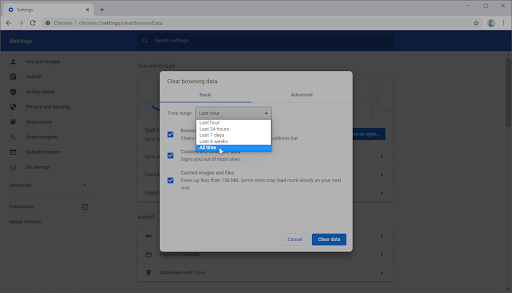
- Enable all of the following options:
- Browsing history
- Cookies and other site data
- Cached images and files
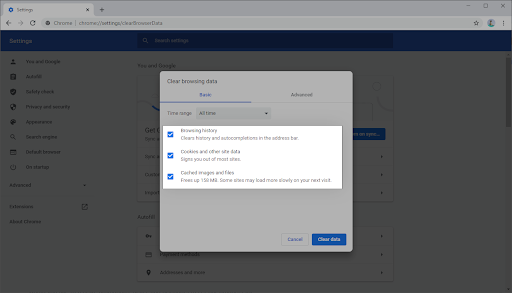
- Click on the Clear data button. After the process is over, restart Google Chrome and check if this helped you resolve the problem.
Method 6. Disable Chrome Extensions
If you have any extensions installed in your Chrome browser, try disabling them and see if that fixes the problem.
To do this, click on the three dots in the top-right corner of your browser and select "More Tools > Extensions".
This will open a list of all the extensions you have installed in your browser. Disable each one by clicking on the toggle in the bottom-right corner of the extension box.
Alternatively, if you see any extensions you don’t recognize, you should remove them entirely from your Chrome browser by clicking the Remove button.
Method 7. Flush Cache in Chrome
If you use Google Chrome as your browser, this solution may do the trick for you. Chrome maintains track of all DNS entries in order to speed up the loading of the websites you visit frequently.
If wrong entries are stored, it might cause errors like ERR_EMPTY_RESPONSE. To fix this, clear the host cache in Google Chrome.
- Launch Google Chrome and type chrome://net-internals/#dns into the address bar, and then hit Enter on your keyboard.
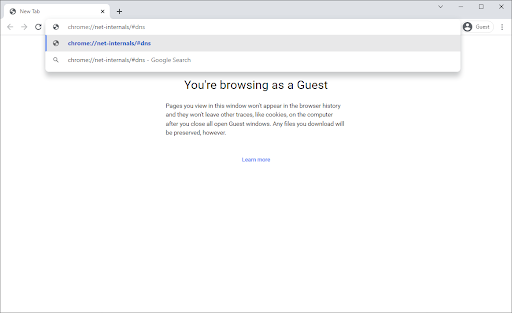
- Click on the Clear host cache button. You’ll be prompted to relaunch Google Chrome for the changes to take effect. Check if this method has helped you with the error at hand when you're done.
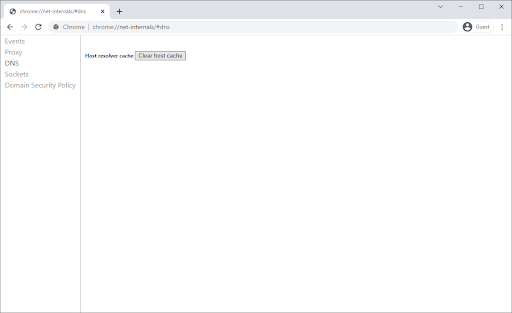
Method 8. Temporarily Disable Your Antivirus Software
If you have antivirus software installed on your computer, try temporarily disabling it and see if that fixes the problem.
- Right-click on an empty space in your taskbar and choose Task Manager from the context menu.

- Switch to the Start-up tab using the header menu located at the top of the window. Here, find your antivirus application from the list and select it by clicking on it once.
- Click on the Disable button now visible in the bottom-right of the window. This will disable the application from launching when you start your device.
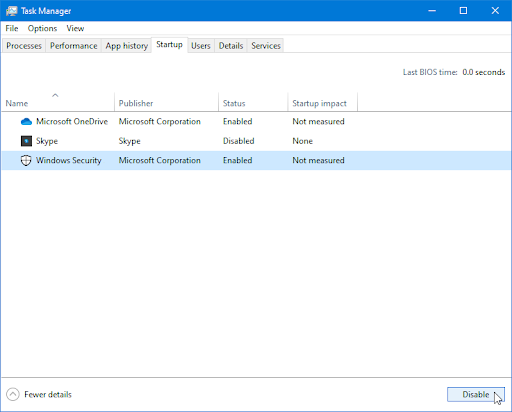
- Restart your computer and see if you’re able to access the website giving you an error. Don’t forget to turn your antivirus app back on afterward!
Method 9. Reset Your Network Settings
Try resetting your network settings if you're still seeing the ERR_EMPTY_RESPONSE error. This can help if the problem is caused by a corrupt network configuration.
Please keep in mind that you'll need to re-authorize all of the networks you previously utilized once you've completed the procedures below.
- Click on the Windows icon in the bottom left of your screen to bring up the Start menu. Choose Settings, or alternatively use the Windows + I shortcut.
- Click on the Network & Internet tile.

- Make sure to stay on the Status tab. Here, scroll down to the bottom of the page and click on the Network reset link.
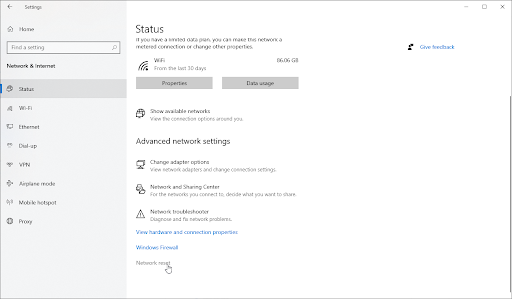
- Before beginning the network reset procedure, read the precautions. Click the Reset now button once you've acknowledged what this feature does.

- Click Yes. After all your network profiles have been reset, check if you’re able to go online.
Final Thoughts
That’s everything you need to know about how to fix the ERR_EMPTY_RESPONSE error in Google Chrome. If this guide was helpful, check out our other blog posts for more tips and tricks on using Google Chrome as well as other software applications.
Now we’d like to get it back to you.
If there are any questions left unanswered or problems not addressed, please feel free to reach out. Our team of experts would love to help!
Follow our Blog and Help Center for more great articles like this one with reviews, trips and tricks, troubleshooting, and more other issues.
One More Thing
Sign up for our newsletter and get early access to our blog posts, promotions, and discount codes. Thank you for reading! We hope to see you again soon.
Recommended further reading
» How to Fix DNS_Probe_Finished_No_Internet in Google Chrome
» How To Fix the “Webpage Not Available” Error in Your Browser
» How To Fix the Err_Connection_Reset Error in Google Chrome
Feel free to reach out with questions or requests you’d like us to cover.





